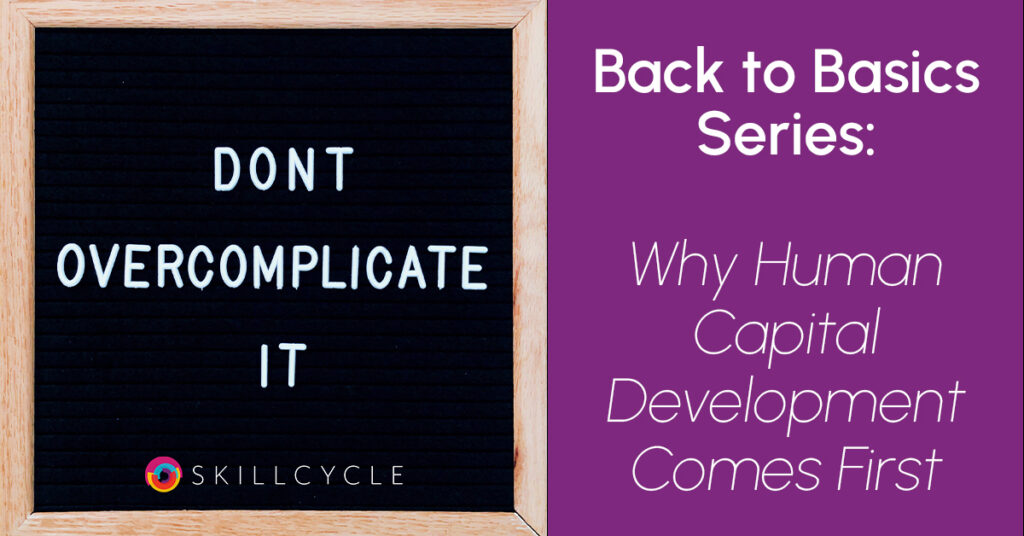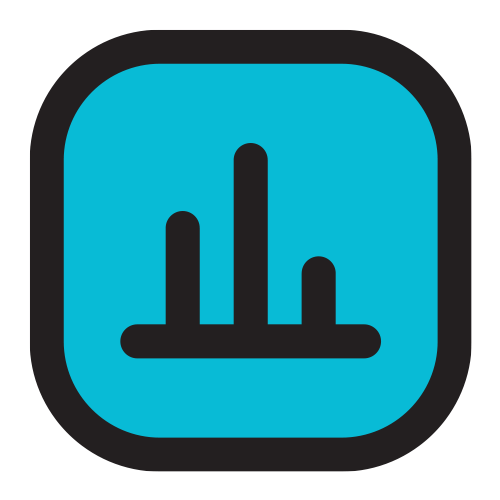
If you aren’t putting your people and their development first in the current job market, you could run into difficulties. Human capital development will be on the radar of every company looking to keep its best talent and stay ahead of competitors.
Why should you be keeping a close eye on your employees? In 2022, the number of job openings was 10.9 million, with the number of new hires at 6.3 million, according to McKinsey. When people talk about a war on talent, this gap is at the center of the conversation.
What does this mean for companies who want to do things differently? To understand how this shift in the job market has occurred, let’s look at how important it is for employees to feel like their organization cares about them and their future.
Many factors can trigger employees to quit, but one of the top three reasons people will leave a job is a lack of career development and potential for advancement.
This reality spotlights a fundamental understanding: companies that take a proactive role in employee development are better positioned to offer effective performance management.
Why? Because you can only manage performance if you are enabling that performance through necessary training and development.
In this blog post, we’ll explore:
Human capital development refers to how you train, upskill, and support your employees to do well in their current roles and prepare them for future career pathways. It’s an investment in their future and that of the company. Human capital development focuses on the learner, creating provable talent development that leads to worklife success.
Does prioritizing the development of employees mean every manager needs to be a career coach? Not at all. It’s often more effective for managers to focus on what they do best and leave the development to certified experts. But no matter whose job it is, talent development needs to be a priority so that both people and organizations are prepared for changes that may lie ahead.
And change is coming in many industries. A survey conducted by Gartner revealed insights about how people are feeling about the future of their work—with 80% of the workforce, 92% of managers, and 77% of senior leaders feeling poorly prepared for the future. As well, 40% of respondents said they often handle responsibilities outside of their roles.
HR needs the tools to properly develop employees and ensure they have the skills and expertise they need to do their job well. Only then can you assess and manage their performance for future improvement.
Get these steps in the correct order, and you’ll start to make tangible changes in how your organization promotes career agility and closes skills gaps.
In the current job market, few companies can afford to ignore the need to develop their workforce. According to Gartner, 58% of the workforce needs new skills to get their jobs done. Not to move up within the organization and not to prepare for a future role—but to simply handle the responsibilities of their current positions.
Developing employees so they can be more effective and productive in their roles will benefit both people and organizations. However, moving directly to managing how someone performs in a role without first developing their capacity to succeed is skipping a critical step.
Only when you connect your employees’ goals to those of your company can you see real progress in worklife success.
Your people want to grow. If you offer them the development they need to be successful, you can boost their happiness at work and help them envision a future within the organization.


HR practitioners have been navigating layers of complexity in a labor market that has launched trends like The Great Resignation, “quiet quitting,” and The Great Reshuffle into mainstream conversations. Constantly trying to do more with less, HR practitioners need more effective ways to help develop employees and fill growing skills gaps in organizations.
When these challenges are proactively addressed, employees become more engaged in learning and their jobs, making performance easier to manage.

Your workforce is a huge driver of business growth—or a detraction from it. Research from PwC shows that the workforce is the number one risk to company growth. The good news is that the flip side is also true. Harnessing the power of your people can exponentially drive growth forward.
Companies who get the development equation right will see better engagement and retention and likely a better return on their learning investments.
Everyone benefits when companies use a proactive approach to engage, develop, and retain their employees. SkillCycle supports every stage of the employee lifecycle with learning at its core, so leaders, teams, and companies can focus on growth.
SkillCycle is a worklife success suite built from the belief that we can do better. Learn how our Human Capital Development Suite helps you rethink people success across the entire employee lifecycle.